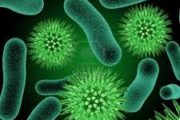Gastritis is inflammation (irritation) of the stomach lining. This may be caused by many factors including infection, alcohol, particular medications and some allergic and immune conditions. Gastritis can be either acute (with severe attacks lasting a day or two) or chronic (with long-term appetite loss or nausea). In many cases, gastritis has no symptoms (asymptomatic).
Gastritis must be identified and treated to prevent further pain, discomfort, and complications. Paying attention to your body’s warning signs can help pinpoint gastritis earlier, so the inflammation clears up and you can begin enjoying life once more.
One of the most common forms of gastritis is caused by medication, the widely used painkillers, which include ibuprofen , diclofenac, and naproxen , are known to affect the stomach and lead to irritation and swelling if taken on a routine basis.
Some forms, including chronic atrophic gastritis, have been associated with an increased risk of stomach cancer. Treatment options include avoiding exposure to known irritants and taking medication to reduce the amount of gastric juices.
Symptoms
In many cases, gastritis has no symptoms. Common symptoms can include:
Loss of appetite
Pain in the upper abdomen just under the ribs
Nausea or indigestion
Hiccups
Vomiting
Blood in the vomit
Blood in the bowel actions, if the stomach lining has ulcerated (this turns stools black and is called melaena)
Weight loss.
Risk factors:
Although anyone can get gastritis, certain factors can raise your risk. These include:
Infection with H. pylori, a common bacteria associated with stomach ulcers
Smoking
Drinking alcohol
Thinning of the tissues lining the stomach
Viral infections
Overproduction of stomach acid
Older people or those with weakened immune systems are at a greater risk of developing gastritis. Some people may have genetic abnormalities that predispose them to developing gastritis. Those who take NSAIDs consistently to treat chronic conditions like arthritis or pain should be aware of their risk of developing gastritis and talk to their doctors about protecting their stomachs.
Besides smokers and heavy drinkers, others at risk of getting gastritis include those who drink acidic beverages (like coffee) and are under constant stress (which produces lots of gastric acid).
Diagnosis:
Diagnosing gastritis involves a variety of tests, including:
History and physical examination
Endoscopy – a thin flexible tube is threaded down the oesophagus into the stomach. The endoscope is fitted with a small camera so the physician can look at the stomach lining. If the gastric mucosa is reddened, this may indicate gastritis. A biopsy is needed for confirmation.
Biopsy – small tissue samples are taken during an endoscopy and tested in a laboratory. The pathologist will look for changes, including the presence of inflammatory cells and epithelium damage.
Once your gastritis is diagnosed — either by your clinical history or an upper endoscopy treatment can begin.
Gastritis treatment varies from person to person and depends on what’s causing the inflammation. Treatments generally focus on fixing the problem that’s actually causing the gastritis, like clearing up an infection.
If you’re taking a drug that is irritating your stomach and causing gastritis, your doctor will probably put you on something less irritating. You might also be given medication to reduce stomach acid in order to control the inflammation. And you might have to stop consuming certain foods and beverages, like coffee, alcohol, and acidic fruit juices, that can worsen gastritis symptoms.
Identifying the cause – once the cause is identified, steps can be taken to avoid exposure. For example, if alcohol is triggering the inflammation, you can abstain or reduce the amount of alcohol you drink. Anti-inflammatory drugs taken to help manage other conditions may need to be stopped or replaced with an alternative.
Medications – tablets are available to reduce the acid content in the gastric juices. You may need to take these medications for a few weeks or months, depending on your situation.
Dietary modifications – such as limiting or avoiding alcohol and caffeine, which can irritate the stomach lining.
No treatment – often gastritis is found by chance during an endoscopy. If Helicobacter pylori is not present, and there are no other features seen on biopsy, there is usually no need to treat the gastritis.
Helicobacter pylori infection:
The Helicobacter pylori bacterium causes gastritis and is also responsible for most peptic ulcers. A peptic ulcer is a hole in the lining of the stomach, duodenum or oesophagus. Helicobacter pylori bacterium is thought to be a cause of indigestion and a contributing factor in the development of stomach cancer.
The germs live in the lining of the stomach and the chemicals they produce cause irritation and inflammation. Diagnosis includes a special breath test to check for gaseous by-products of the bacteria. Treatment includes a combination of different antibiotics and antiacids.
Omar Sydney
Kigalihe.com
Warning: file_get_contents(https://plusone.google.com/_/+1/fastbutton?url=https%3A%2F%2Fkigalihealth.com%2Fall-about-gastritis%2F): failed to open stream: HTTP request failed! HTTP/1.0 404 Not Found in /home/kigal4health/public_html/wp-content/themes/goodnews5/goodnews5/framework/functions/posts_share.php on line 151










